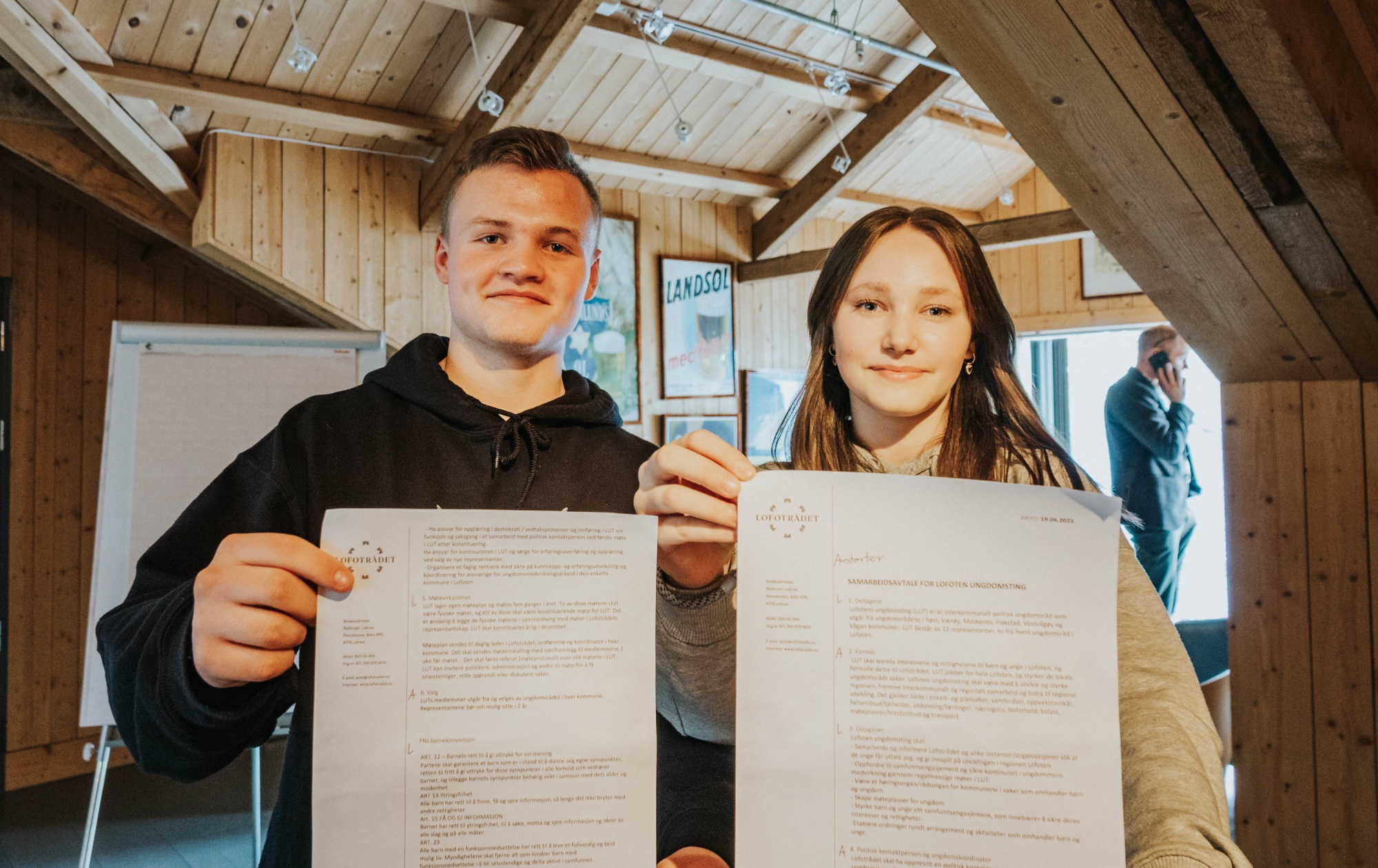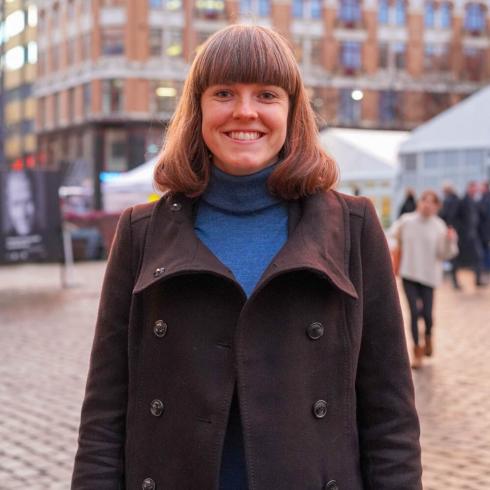
Young people are most concerned about Lofoten's future
3 out of 4 Lofoten residents believe climate change is happening, and their conviction has become stronger since last year, according to the Lofoten Survey 2022. Young people under the age of 30 are the most concerned, and one in three is very worried about changes in local biodiversity. At the same time, the youngest are also the most impatient and optimistic about other environmental issues.
Three local young people, Dina, Anette and Martha, are clear that Lofoten residents can make a difference.
By Laura Johanne Olsen
Almost 1,600 people responded to the comprehensive survey commissioned by Kantar on behalf of Lofoten Green Islands 2030 in June. Such a high response rate gives very representative figures for most of the municipalities in Lofoten.
The changes are underway ...
75 percent of us believe that it is very or fairly true that "climate change is happening", exactly the same proportion as in last year's Lofoten survey. The proportion is thus in line with the rest of the country and on a par with Cicero's annual national surveys on the same topic.
Women are still more convinced than men, but in general more have moved to "it is very true" that climate change is happening (42 percent this year compared to 38 percent last year). This is particularly due to those under 30, where the "strongly agree" group has increased a full 8 percentage points since last year. Only 7 percent believe the climate is not changing, and among the youngest, the figure is as low as 5 percent. 16 percent say 'neither' or 'don't know'.
... and they are man-made
The same proportion, 75 percent, believe that climate change is man-made. Here too, concern is increasing. The "Strongly agree" group has increased from 36 to 41 percent, and among young people by as much as 9 percentage points, from 46 to 55. Only 8 percent completely or partially do not believe that human activity affects the climate; among young people, only 6 percent do not believe this.
The underlying figures also show that people with a background in transportation, industry and construction are more uncertain that humans are to blame for climate change. In these groups, between 32 and 38 percent are either unsure or believe that human activity has an impact. In the public sector, only 11 percent place themselves in these three categories.
Many believe they have a responsibility
72 percent of the population believe that they have a personal responsibility to reduce their greenhouse gas emissions. This result is also exactly the same as last year, but again, the biggest changes are found among those under the age of 30: Here, the proportion who believe they have a responsibility has increased from 68 to 75 percent. This means that the youngest people want to take more responsibility than the population average.
Dina Hanssen (20) is originally from Stokmarknes, but has lived in Mortsund on Vestvågøy since 2018. She is among those who feel a personal responsibility to cut her own emissions, and has adopted several good habits to make small differences.
-"I notice myself that I can often get angry if I see that someone has left the light on all day, for example, and I quickly comment on it! It's small things, but it's so easy to do something about, and that's important! I think people my age are much more subconscious about everything we do.
-Part of the reason why we feel a sense of responsibility may be that we know that we're the ones who will have to live with it in the future.
She recounts experiences with well-grown people who disclaim responsibility precisely because "it doesn't affect me".

Lofoten no longer sustainable?
The biggest change from last year's Lofoten survey is to be found in the perception of whether Lofoten is a "sustainable destination". Last year, a full 50 percent completely or partially agreed with this statement, this year the corresponding figure is only 32. The proportion who completely or partially disagree that Lofoten is a sustainable destination has increased from 29 percent last year to 40 percent this year. This means that a clear majority no longer believe that Lofoten is sustainable - a huge change in just one year.
The self-perception of those under the age of 30 is the worst: Here, only 13 percent fully or partially agree with the statement that Lofoten is a sustainable destination, while as many as 36 percent fully or partially disagree. 33 percent stated "neither-or" and 9 percent answered "don't know". Last year, a small majority of young people thought that Lofoten was a sustainable destination.
Anette Knutsen Finstad (25) from Leknes is taking a decentralized master's degree in Global Management at the University of Bodø while working as Hospitality Manager at Hemmingodden Lodge in Ballstad. The master's degree builds on her bachelor's degree in Marketing and Management of Tourism Experiences from Inland Norway University of Applied Sciences.
She believes that the big jump in the perception of Lofoten as a sustainable destination is partly due to increased knowledge about the concept of sustainability, especially in the generation she is part of.
-"Both increased knowledge about what is actually sustainable and what is not, but also that we are looking more closely at all aspects of sustainability, the social, the economic and the climate aspects.

However, when asked whether "it is important for Lofoten to reduce greenhouse gas emissions in order to be perceived as a sustainable destination in the years to come", young people overwhelmingly agree with the majority of 54 percent who believe it is quite or very important. This means that local politicians have a clear majority behind them in their efforts to reduce emissions. As many as 64 percent of women believe that emission cuts are important. Only one in five Lofoten residents believe reductions are not particularly important, while 19 percent are neutral and 7 percent answer "don't know".
Anette believes that being seen as a sustainable destination will eventually become important no matter where you are in the world. "It's not necessarily the most important thing to attract people, but places that are not sustainable risk people avoiding traveling there," she believes. At the same time, she asks herself the question: -"Do we want even more people to travel here? If Lofoten is to be sustainable, we need to create a tourism product where people want to spend more time per destination, and spread it out over the year to a greater extent.
She believes that the responsibility for becoming more sustainable lies with local businesses, and that they must first and foremost acquire knowledge. -"Only then can you take action. You have to take responsibility for what your company is doing, and choose partners with the same intentions and understanding of the challenges we face.
Lofoten is largely tourism-driven. This means that we must also facilitate good habits among visitors. When they are here, they are on vacation. They may relax and not be as concerned about the footprint they leave behind.
Fear of skrei (The Arctic Cod) and biodiversity
Despite the fact that young people are the most critical of sustainability efforts today, this group is also the most optimistic on other issues. One of them is whether they think Lofoten will manage to achieve the goal of "cutting at least 50 percent of emissions by 2030 in line with the Paris Agreement". Only 12 percent of the population believe this is possible, while 62 percent do not. However, in the group under 30 years of age, 19 percent believe that the target can be achieved, while 37 percent of pupils and students believe the same. This last group is also the only one where there is a majority of optimists, as "only" 32 percent believe it is not possible.
The youngest people are far less positive when asked if they fear changes in the biodiversity of our island community. 54 percent of those under 30 are somewhat or very concerned about biodiversity, compared to 50 percent overall. More than one in four pupils or students are also very concerned, compared to only 11 percent of retirees.
However, the age picture changes when it comes to the cod. In the population as a whole, almost two out of three (64 percent) are somewhat or very concerned that the cod will move further north as the sea gets warmer. In the oldest group (over 60 years old), 28 percent are very concerned, compared to "only" 21 percent among those under 30.
How important is the green shift?
On this question, it is once again young people who take the lead. 53 percent of the population as a whole believe that the green shift is fairly or very important, compared to almost 60 percent of those under 30. Managers and middle managers are also overrepresented here, with 57 percent. 22 percent of all citizens think it is less important, 20 percent think "neither-or" while 5 percent have not made up their minds.
Martha Johanne Pedersen (23) from Ballstad, who is currently in her final year of a Master's degree in Renewable Energy at the Norwegian University of Life Sciences in Ås, is not surprised by the results. She is pleased that the figures show that we are on the right track, but would have liked to see an even higher percentage agreeing that the green shift is important.
-"The latest reports from the UN Intergovernmental Panel on Climate Change make it abundantly clear: If we are to prevent global warming beyond the targets set in the Paris Agreement, we must make major changes - now!
I think the responses from the Lofoten survey reflect the national view well, but I wish everyone could see the importance of the green shift. Society must undergo a huge transition. If we are to make the transition to a more sustainable society, we need to have people on the team.
Martha is a great Lofoten patriot and has a strong desire to move home one day.
"The fact that we are actively working to make Lofoten a low-emission society, for example by drawing up a roadmap for Lofoten Green Islands 2030, helps to make the region more attractive for me to live and work in. The fact that local authorities and key business players show that they want to take an active part in the green shift is important and is noticed.

Photo By Dina, Anette og Martha: Maria Jentoft (Footprint)